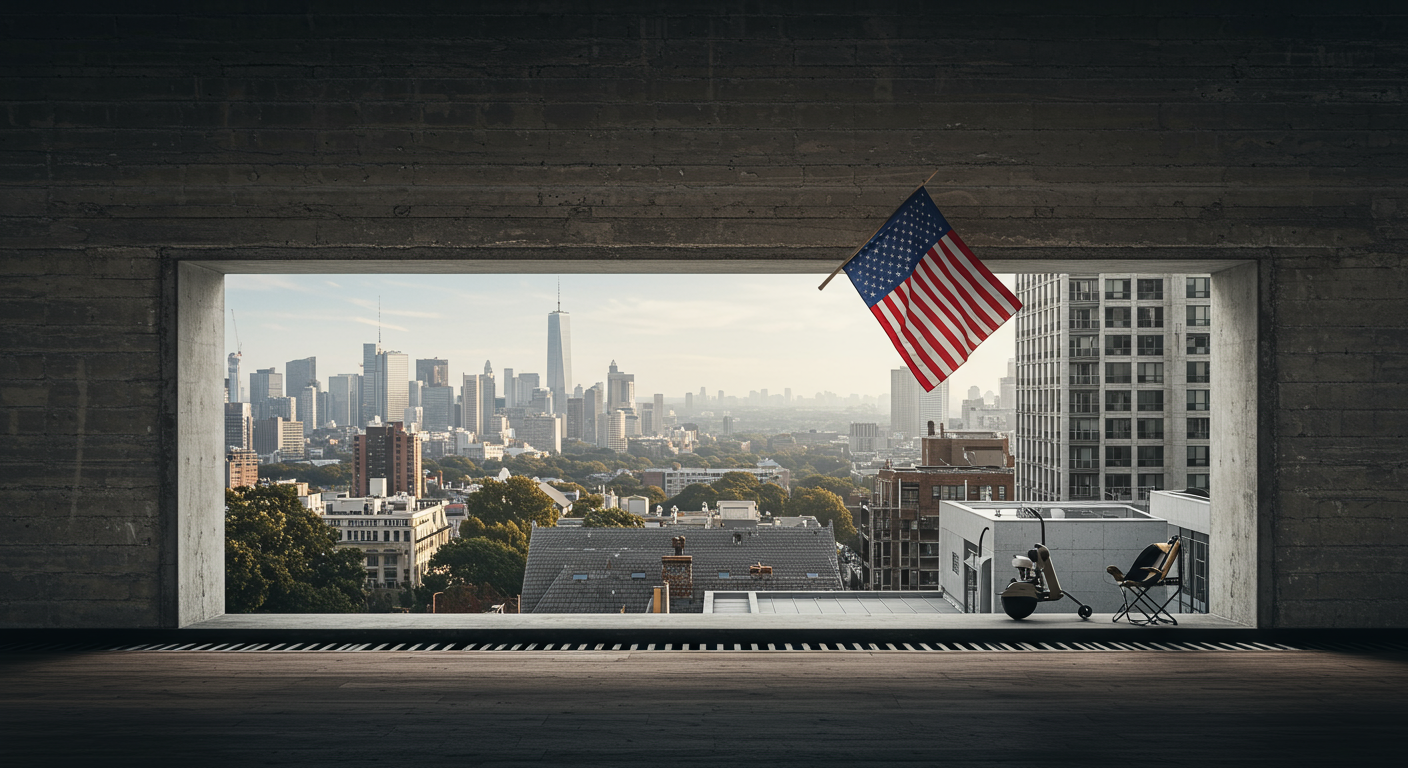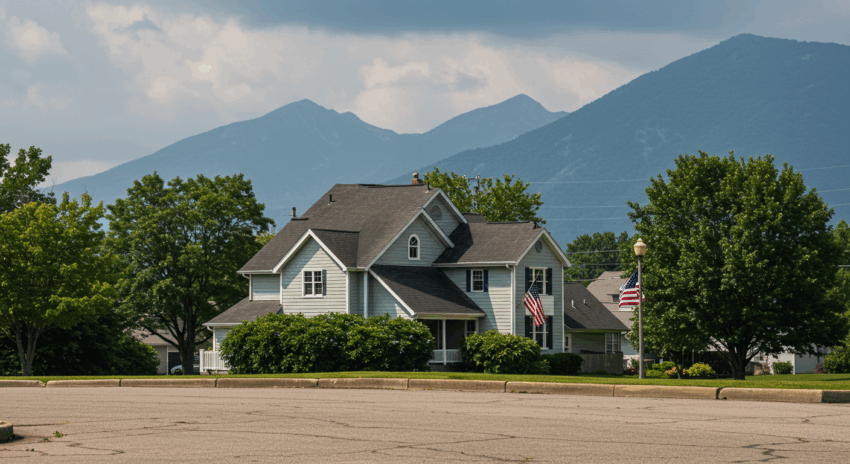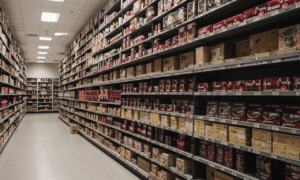The recent dip in existing-home sales might seem like just another dry statistic, but it tells a crucial story about the state of the American dream and the broader health of our economy. If you’ve felt that buying a home is more challenging than ever, you’re not imagining it. The latest data confirms a significant cooling in home purchasing activity, driven by powerful financial headwinds that are affecting millions of potential buyers. This article will break down what these new figures mean, why the market is behaving this way, and how it impacts everyone—not just those looking to buy or sell a home.
The Core Numbers: A Snapshot of the Stalled Housing Market
To understand the full picture, we first need to look at the hard data. The latest reports on the real estate sector paint a clear portrait of a market under pressure. For the second month in a row, the pace of sales for previously owned homes has slowed down.
Here’s a breakdown of the key takeaways:
- Sales Volume is Down: Sales of existing homes fell by 1.9% in the most recent monthly data, marking a continued decline. When compared to the same time last year, sales are also down by 1.9%. This shows a consistent trend of fewer properties changing hands.
- Prices Are Still Climbing: This is the part of the puzzle that surprises many. Despite fewer sales, the median price for an existing home has actually increased. It rose by 5.7% from the previous year, hitting a new high of over $407,000. This is the tenth consecutive month that we’ve seen year-over-year price gains.
- Inventory is Ticking Up: There is a sliver of good news for buyers: the number of homes available for sale has increased. Housing inventory rose from the previous month, providing slightly more options. However, this supply is still considered low by historical standards, which is a key reason prices remain stubbornly high.
In short, we are in a strange market paradox: fewer people are buying, but the homes that are for sale are getting more expensive. To understand why this is happening, we need to examine the two primary obstacles facing today’s homebuyers.
The ‘Why’ Behind the Slump: A Tale of Two Hurdles
The slowdown in the housing market isn’t a mystery; it’s a direct result of an affordability crisis fueled by two major factors: high mortgage rates and high home prices.
1. The Mortgage Rate Mountain
The single biggest deterrent for potential buyers has been the sharp rise in mortgage rates. After years of historically low rates, many of which were below 3%, rates have been hovering around the 7% mark. While that may not sound like a dramatic leap, it has a massive impact on a buyer’s purchasing power and monthly payment.
Let’s use a practical example:
Imagine you’re taking out a $350,000 loan to buy a home.
- With a 3.5% mortgage rate, your monthly principal and interest payment would be approximately $1,571.
- With a 7% mortgage rate, that same loan would cost you approximately $2,328 per month.
That’s an extra $757 every single month, or over $9,000 a year. This dramatic increase has pushed homeownership out of reach for many, especially first-time buyers who don’t have equity from a previous home to leverage.

2. Persistently High Prices
Compounding the problem of high borrowing costs are the high home prices themselves. As the data shows, even with fewer buyers in the market, prices continue to climb. This is a classic case of supply and demand. There simply aren’t enough homes for sale to meet the underlying demand from a large population of millennials and Gen Z now entering their prime home-buying years. This scarcity keeps prices elevated, creating a double-whammy for buyers facing both high prices and high financing costs. It’s a challenging environment for anyone trying to manage their personal finance and save for a down payment.
The Lock-In Effect: Why Aren’t People Selling Their Homes?
A key reason for the low housing supply is an economic phenomenon experts call the “lock-in effect.” It’s a major reason the market feels so stuck.
Here’s how it works: Tens of millions of current homeowners in the U.S. either bought or refinanced their homes between 2020 and 2022, securing mortgage rates at or below 4%. These homeowners are now “locked in” by their incredibly low monthly payments. If they were to sell their current home, they would have to buy a new one at today’s high prices and, more importantly, finance it with a mortgage rate around 7%.
This would mean a significant—and for many, unaffordable—increase in their monthly housing costs, even if they bought a similarly priced home. As a result, many potential sellers are choosing to stay put, even if they’ve outgrown their home or would like to move. This collective decision to not sell keeps a huge number of properties off the market, exacerbating the inventory shortage and propping up prices.
Ripple Effects: How a Slow Housing Market Impacts the Broader Economy
A slowdown in property sales is more than just a real estate headline; it has far-reaching consequences for the entire economy. The housing market is a powerful economic engine, and when it sputters, other sectors feel the impact.
Consider the ripple effect:
- Reduced Consumer Spending: When people buy a new home, they also buy new things to put in it. A slow housing market means less spending on furniture, appliances, landscaping, paint, and home decor.
- Impact on a Crucial Asset: For most American families, their home is their largest financial asset. A stagnant market can affect household wealth and consumer confidence, making people more cautious with their spending and investment decisions.
- Construction and Labor: While the data we’ve discussed is for existing homes, it reflects a sentiment that also affects new construction. Slower sales can lead to a pullback in home building, affecting jobs in construction, contracting, and skilled trades.
- Financial Services: Fewer home sales mean less business for mortgage lenders, real estate agents, title companies, and home inspectors.
In essence, the health of the residential real estate market is a key indicator of overall economic vitality. Its current sluggishness suggests a cautious consumer and a broader economy that is still navigating the pressures of high interest rates.
Frequently Asked Questions (FAQ)
With sales falling, should I expect a housing market crash and plummeting prices?
While falling sales can sometimes precede a price drop, that’s not what most economists expect in the current environment. The primary reason is the severe lack of housing inventory. With so few homes for sale due to the “lock-in effect,” there is still enough buyer demand to keep prices stable or even rising in many areas. For prices to fall significantly, there would need to be a much larger surge in the number of homes for sale or a sharp drop in demand, neither of which appears imminent.
As a potential homebuyer, what should I do in this market?
This is a challenging market, but it doesn’t mean you should give up on the dream of homeownership. The best strategy is to focus on what you can control. This includes strengthening your financial position by improving your credit score, paying down debt, and diligently saving for a larger down payment. A larger down payment can reduce the size of your loan and potentially help you secure a better interest rate. It’s also a good time to thoroughly research neighborhoods to identify areas that may offer better value. Patience is key, as the market will eventually shift as economic conditions change.



